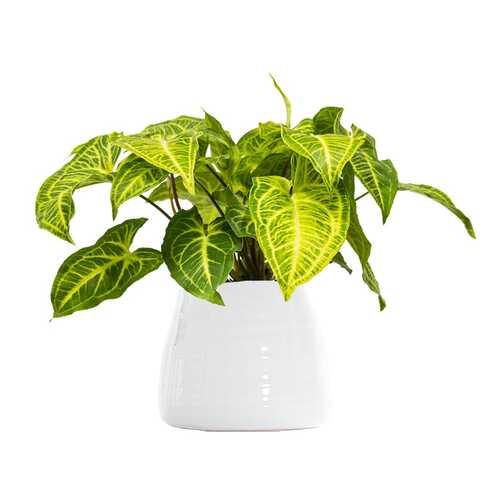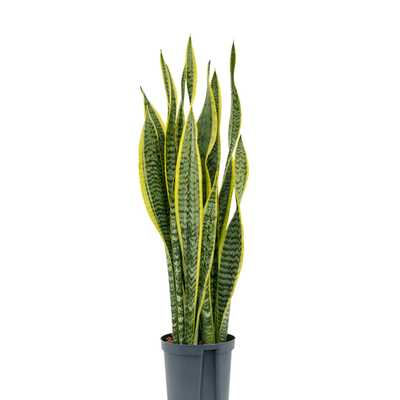Call US : 989124548005
Maranta’s overall features
0 USD
Short Description:
The prayer plant, scientifically known as Maranta leuconeura, is a tropical plant that pays tribute to Bartolomeo Maranta, an Italian physician and botanist from the 16th century.Maranta’s overall features
The prayer plant, scientifically known as Maranta leuconeura, is a tropical plant that pays tribute to Bartolomeo Maranta, an Italian physician and botanist from the 16th century.
The Maranta plant has large, oval-shaped leaves with intricate patterns and vibrant colors. The plant exhibits leaves with rounded edges and distinct, vibrant-colored veins. The central vein of the leaves is encircled by a light-colored halo, creating a noticeable separation from the other parts.
Renowned for its decorative foliage, prayer plant is particularly recognized for the tricolor variety. These plants boast lush green, velvety leaves adorned with yellow patches along the midrib and red veins that extend to the leaf edges.
One of its notable characteristics is its unique leaf behavior. Throughout the day, the leaves of the prayer plant stay flat, but during the night, they fold up, resembling hands in prayer.
When put in a hanging basket, the Herbaceous, perennial plant adds a stunning visual effect to its surroundings. Its attractive colors make it a viable choice for group planting.
Maranta is an ideal plant for compact areas due to its slow growth rate. It thrives in a greenhouse setting characterized by warmth, high humidity, good airflow, and effective fertilization.
These days, prayer plants are highly sought after as houseplants and can be nurtured indoors year-round, although they require attentive care to thrive in the long term.
Read this note to get to know this lovely plant!
Origin:
Maranta is a genus of flowering plants in the family Marantaceae. Its main habitat is in tropical regions of Central and South America. It is basically found in countries such as Brazil, Venezuela, and Colombia.
Light requirements:
While prayer plants can tolerate lower light conditions, they benefit from bright light during their winter dormancy period to support robust growth.
This plant thrives in a bright environment but should be kept away from direct sunlight, especially during the summer when it prefers more shade. In winter, it needs ample light but still should be shielded from direct sunlight as it can cause the leaves to lose color and even get burned. However, during cold winter mornings and evenings, direct sunlight is generally not harmful. The plant's leaves become pale under strong ambient light that is not direct sunlight. Insufficient light can also prevent young leaves from opening, so it's important to move the plant to a well-lit area if this occurs.
Watering:
To keep your prayer plant healthy, make sure to water it regularly during the growing season. Keep the top layer of soil moist, but avoid letting it dry out completely as these plants are sensitive to drought. Be cautious not to leave water on the leaves or let the plant become overly saturated, as this can lead to fungal issues. Yellowing and dropping leaves may occur the plant is under or overwatered. When watering, use room temperature or slightly warm water.
In summer, watering 2-3 times a week is recommended, while in winter, once a week is sufficient.
If the leaves' tips are burning or browning, it indicates insufficient moisture on hot and dry days. Prolonged thirst can cause the leaves to twist, wither, and eventually droop and fall.
Proper Soil:
Prayer plants thrive in well-draining soil. A standard potting mix works well, or you can create your own by combining sphagnum peat moss, loamy soil, and perlite or coarse sand. The soil should have a slightly acidic pH of around 6.0. Ensure proper drainage by adding rocks or gravel at the bottom of the pot and using containers with sufficient drainage holes.
Insufficient nutrients, particularly nitrogen and iron, can impede plant growth and cause yellow leaves. The plant requires gentle and regular fertilization. During the growing season, it is recommended to fertilize every two weeks using soluble fertilizers specifically formulated for ornamental plants, but at half the usual concentration. To feed ornamental plants, follow the instructions by providing water-soluble liquid or solid fertilizers at a rate of one gram per liter, once every two weeks, from May to September.
Temperature and Humidity:
The optimal temperature range for this plant is between 70-79 degrees Fahrenheit, although it can tolerate temperatures between 61-86 degrees Fahrenheit. It dislikes cold weather, with the minimum tolerable temperature being 61 degrees Fahrenheit. Exposure to cold temperatures causes the leaves to curl and wither.
The plant prefers high humidity, which can be increased by placing a humidifier nearby or using a tray filled with stones and water. Spraying the leaves regularly with room temperature or slightly warm water also helps maintain adequate humidity.
Brief Overview:
Botanical Name: Maranta leuconeura
Family: Marantaceae
Plant’s classification: Ornamental houseplant
Requirements: partial shade, moist but well-drained soil, neutral to acidic pH
| Colors : | Green, Pink |
| Height : | 40cm, 55cm |
| Pot (Liter) : | 4, 7 |
Product Reviews
Similar Products
List of similar products that you can see

Yucca’s
0 USD

Yocca
0 USD

Zamioculcas Zamiifolia
0 USD

Syngonium’s
0 USD

Spathiphyllum
0 USD

Schefflera
0 USD

sansevieria
0 USD

Pothos Silver Splash
0 USD

Pothos adanson
0 USD


.jpg)
.jpg)
.jpg)
